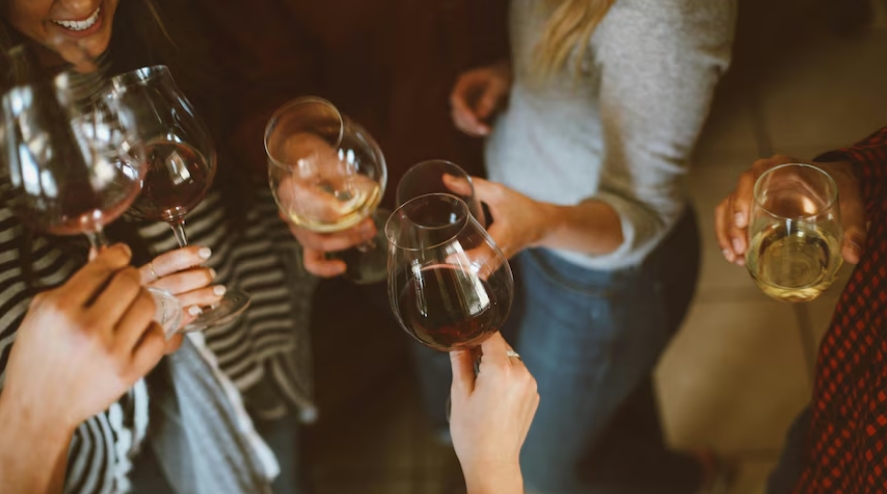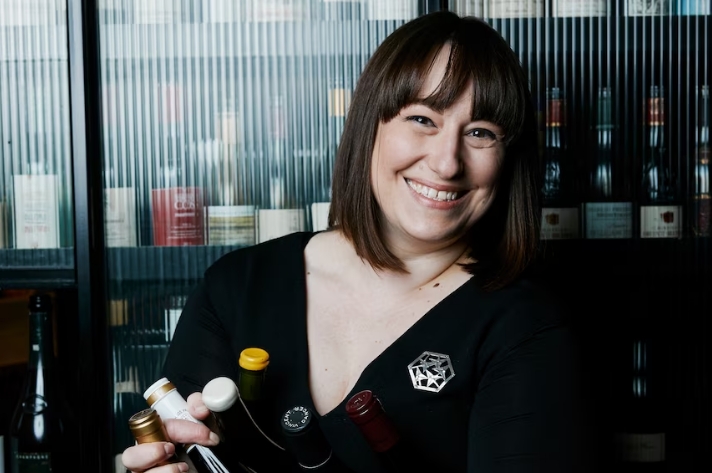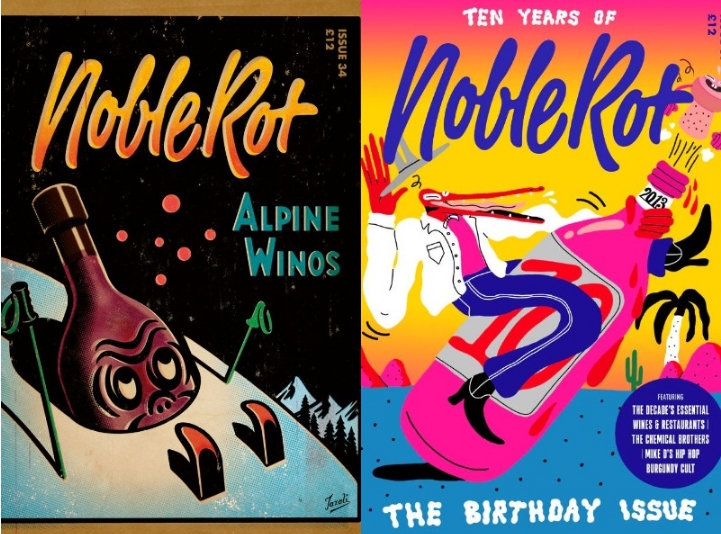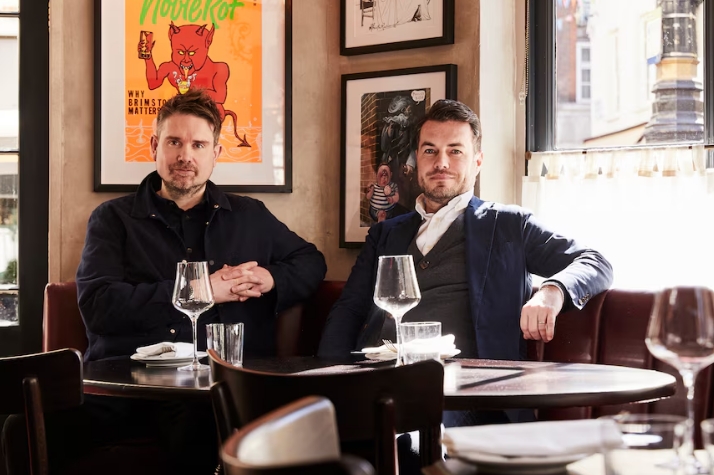TikTok sommeliers and Keira Knightley articles: how wine culture is changing on and offline

While young Australians might be drinking less overall, wine bars remain popular.()
In April, a tousled-haired sommelier went viral for running the London Marathon.
Tom Gilbey’s running time — a more than respectable but otherwise unremarkable 4 hours 41 minutes — wasn’t the cause of his virality. That he stopped to conduct a blind wine tasting at every mile (25 in total) was more astonishing.
“Shiraz? From Australia? Cheap?” Gilbey panted, correctly, 16 stops in, before re-holstering a wine glass to his running belt and taking off.
It might seem like a queasy gimmick (it was actually to raise money for charity), but it partly reflects the changing way wine is being talked about online.
Perhaps unsurprisingly, that’s coinciding with a change in the way people are drinking it.
Recent research suggests global wine consumption is at its lowest point in 30 years, in no small part due to young people drinking less than their parents and grandparents.
At the same time, Instagram and TikTok are awash with a new wave of wine content creators posting popular videos demystifying and attempting to democratise an industry often considered loaded with pretence and gatekeeping.
Gilbey, who speaks with an earnest English affectation, attracts millions of views on videos of him drinking rare and special bottles, like a 26-year-old Barossa Valley Grant Burge (“what a bloody treat!”).
But he also reviews wines at a supermarket price point, such as Australian exports 19 Crimes Cabernet Sauvignon (“thumbs up!”) or Yellowtail Chardonnay (“piss”).
“I don’t know how he does it, but he manages to be a wine snob without the snob part. I love him,” reads one comment on TikTok.

Leanne Altmann is a wine judge, educator and sommelier.(Supplied: Kristoffer Paulsen/Trader House)
For Leanne Altmann, who oversees every wine and beverage poured at the network of restaurants, bars and stores run by famed chef Andrew McConnell, it’s a welcome development.
“I really like people who are happy to talk in plain language,” she said.
“The hardest part of wine communication is how you turn a description of something you taste, which is inherently personal, to something that you can talk about, without resorting to analogies that don’t resonate.
“If you’ve got influencers, whether they’re on Instagram, TikTok or YouTube, who can break down some of those barriers and make wine a bit more accessible, then I love that.”
‘Tidal wave of change’
Amid a cost-of-living crisis and a generation less inclined to drink, an emergent wine culture somehow continues to evolve offline, too.
Wine consumption is expected to fall by a further two per cent in the next three years, according to a wine trends report from IWSR.
Yet spending in Australia on wine priced above $15 a bottle over the same time period is expected to rise.
Catering to that market is an increasingly popular model of wine bar (a 2023 article in The Age was titled “Is everything a wine bar now?’).
Check the social media accounts of such businesses, and you’ll likely find them spruiking what they have on pour each night as a key point of appeal to a younger market.
On a recent trip to Australia, the founders of influential alternative wine magazine Noble Rot could detect clear similarities to what they have observed in places like New York or their home in London.

Alongside its wine and food articles, Noble Rot magazine has a strong emphasis on pop culture. (Supplied: Noble Rot)
“It’s been a really exciting time for a shift in the way that people embrace wine and wine culture,” said Mark Andrew, a wine buyer and writer, who also runs three restaurants under the Noble Rot name.
“There was never any reason why wine couldn’t be a place for celebration and fun, a younger audience and a more diverse type of a crowd.”
Since 2013, the magazine has, by its own characterisation, “’been riding the tidal wave of change that’s been sweeping wine culture.”
That cultural change might represent just a small segment of the overall wine industry, but for Leanne Altmann, its an augur of things to come.
“The trends in wine of consumer taste change a lot faster than agriculture can,” Atlmann said.
“Back in the mid 2000s, it was all about really big full body Barossa Shiraz at 16 per cent. Now, it’s a full pendulum swing where people want bright, fresh, low-alcohol reds, often chilled. They couldn’t be more different!”

Bright, lighter style wines have become particularly popular in recent years.(ABC News: Jeremy Story Carter)
Noble Rot co-founder Dan Keeling said young people might not be buying as much “headache juice,” but those who are interested in wine are placing a greater value on how it’s made and by whom.
“Since we started, there’s been a generation of people who question everything the baby boomers said about wine,” he said.
“So much about wine culture was quite lazy. There’s a massive opportunity to talk about wine in a way that engages people like they might talk about movies, culture, art, politics.”
Confidence and Keira Knightley
Alongside deep dives into small scale producers from around the world, the magazine features unconventional voices in wine, like articles written by actor Keira Knightley.
“I have a confession. I’m a glutton,” Knightley wrote in an edition last year.
“It’s worse than that. I’m a thin glutton. The kind of glutton who has no business being a glutton. Time will catch up… and when it I does, I will know that I deserve every broken vein and gouty toe.”

Keira Knightley, who writes about wine in Noble Rot, during a scene in the movie Last Night.(Supplied: IMDB)
For a magazine aiming to break down “elitist barriers,” spotlighting the voice of a blockbuster-starring actor might seem counterproductive (Noble Rot has also profiled the likes of Nigella Lawson, the Beastie Boys, Brian Eno and LCD Soundsystem).
But Keeling and Andrew believe the approach provides a human point of connection that helps a broader audience relate to wine.
“The fact that wine is this big scary topic means that even people like Keira [Knightley] are relatively humble in front of that,” Andrew said.
“They might not even really be about wine,” Keeling said of the magazine. “We had Bill Bailey, and Bill is a real polymath — you could talk to him about central heating systems for an hour and he’d have a really interesting story about it.
“So the human part is really what makes it all click.”

Dan Keeling and Mark Andrew from Noble Rot.(Supplied: Noble Rot)
During a wine bar event as part of the recent Melbourne Food and Wine Festival, the two were approached by a pair of scruffily dressed Melburnians in their early 20s.
They asked for an autograph and then discussed in earnest a wine they had tried earlier. Keeling listened intently as the young men talked about the wine as if it were new music from a previously undiscovered artist.
“We’re trying to give people a little bit of confidence, to not always be grasping for facts to justify them feeling worthy about wine,” Keeling said.
“It’s a real confidence thing, and by not being d***heads about it, that’s what we hope we can do.”
文章来源:澳大利亚广播公司


TKFFF公众号
扫码关注领【TK运营地图】

TKFFF合作,请扫码联系!







 闽公网安备35021102002035号
闽公网安备35021102002035号